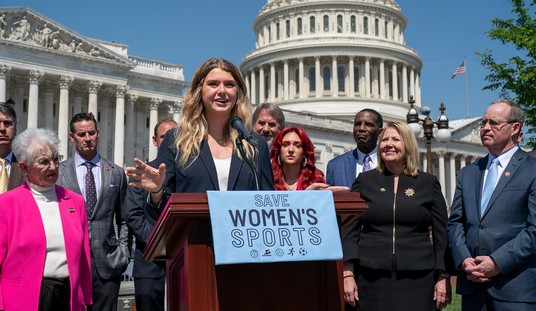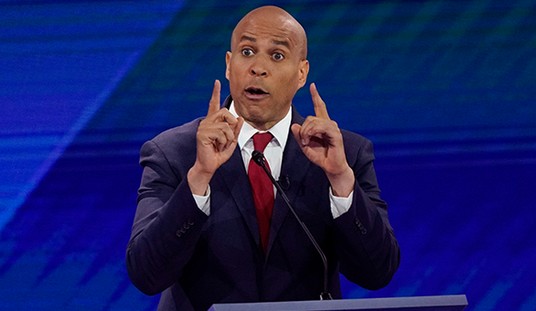[promoted from the diaries as part of the Ambitious Writer’s Program]
In recent weeks, there’s been a flurry of articles written on the proposed Marketplace Fairness Act. The Marketplace Fairness Act is a “bipartisan” proposal that would require out-of-state retailers to collect taxes on items sold in states where they have no physical presence. It’s supposed to level the playing field for all involved. Actually, its just a boon for big box retailers who can’t compete in today’s marketplace.
Sales and use tax is a very technical subject with nuances from jurisdiction to jurisdiction. As a tax professional, I thought I’d put something together to help those unfamiliar with the subject gain a better understanding. In the process I’ll try to shed some light as to who the Marketplace Fairness Act will really benefit.
Let me also take a moment to say that any views expressed here are my personal views and are not those of my employer or any organizations with which I’m affiliated. With the pleasantries dispensed of, let’s get on to business.
TRANSACTION TAXES IN GENERAL
Most people are familiar with sales taxes, but are less familiar with use taxes.
Sales Tax – Excise taxes levied on the sale of merchandise (or services depending on your location) that are collected and remitted to the taxing authority by the seller.
Use Tax – Excise taxes on the consumption or use (hence the name) of merchandise for which no sales tax was paid. Use taxes are self-assessed and remitted to the taxing authority by the buyer.
There is also a third tax which I kindly refer to as the bastard child of sales and use tax because nobody ever wants to talk about it and the difficulties it creates.
Seller’s Use Tax – Excise taxes collected by seller on the sale of merchandise shipped from one state to another where seller has nexus in both locations. In most states, seller’s use is the same rate as sales tax, but not in all states.
All states that have a sales tax also have a use tax. They are designed to complement each other in that you are required to pay either a sales tax or use tax on items purchased. In general, a jurisdiction’s sales and use tax rates are the same; however, there are exceptions (e.g., Colorado). Thus, the basic difference between sales and use taxes is who is required to collect and remit the tax (i.e., Sales tax = seller, Use tax = buyer, Seller’s Use = seller).
THE PHYSICAL PRESENCE REQUIREMENT
States have a long history of trying to force out of state retailers to collect taxes. They argue that tax collection is “just part of doing business.” They do this because they lack an enforcement mechanism for collecting use tax from individuals. This is not something that has come along with the internet, it’s been argued for sixty years. Fortunately for taxpayers, the Supreme Court has consistently ruled that a physical presence is required before a retailer is required to collect tax under the Commerce Clause.
Miller Brothers Co., 347 U.S. 340 (1954). In 1954, Maryland tried to force Miller Brothers, a Delaware retailer, to collect use tax from customers on orders shipped into Maryland even though the orders were placed by the customers at a store in Delaware. The Supreme Court ruled it was unconstitutional for Maryland to impose the collection of the use tax obligation on a Delaware retailer who had no retail outlets or sales solicitors in Maryland. In doing so, the Court noted a Delaware sales tax obligation originated at the time of the purchase while the Maryland use tax obligation did not originate until the purchased goods were imported across state lines and used in Maryland. The burden of collecting such a use tax, although easier for the retailer to perform, could not be shifted to the retailer under such situations.
National Bellas Hess, 386 U.S. 753 (1967). In 1967, Illinois obtained a judgment from the Illinois Supreme Court requiring a retailer to collect and remit the sales tax imposed on the sale of property in Illinois. The retailer was a mail order business headquartered in Missouri that maintained no offices or personnel outside of its home state. All orders were solicited via catalogs shipped to current and prospective customers via mail or common carrier. The Supreme Court found the retailer did not have an obligation to collect Illinois sales or use tax because its only contact with the state was the delivery of promotional materials and goods through mail or common carrier (i.e., they did not have physical presence).
In ruling, the Court noted that if Illinois’ power to impose tax burdens as a result of contact through mail were upheld, “every municipality, every school district, and every other political subdivision throughout the Nation” would have the power to impose sales and use taxes and “the many variations in rates of tax, in allowable exemptions, and in administrative and recordkeeping requirements” would shut down the nation’s business in a “virtual welter of complicated obligations to local jurisdictions with no legitimate claim…” In fact, the very purpose of the Commerce Clause was to ensure an economy free of such “unjustifiable local entanglements.”
Quill, 504 U.S. 298, 306 (1992). The fact pattern of Quill and National Bellas Hess are virtually identical. Quill operated a mail order with no physical presence and no employees located in North Dakota. Quill sold business equipment and supplies to customers through catalogs, flyers and via phone. All sold products were shipped into North Dakota via mail or common carrier. The Supreme Court, in a ruling favoring Quill, found that Quill’s minimal contacts with customers in the state through its deliveries and marketing activities satisfied the nexus argument under the Due Process Clause but failed the bright line test of physical presence under the Commerce Clause.
WHO IS THE ACT FAIR TO?
As mentioned earlier, the purpose of the Act, according to supporters, is to level the playing field between online retailers and traditional brick and mortar retailers. They are arguing the fact that not all retailers collect tax creates a price advantage of up to 5 to 10 percent. They’ll also say that customers are ultimately responsible for the tax, not the retailer, so all retailers should collect it.
In my opinion, this reasoning is flawed and the reasons why are intertwined.
The first argument assumes the only characteristic a customer looks at when purchasing a good is price. While price does play a role, it is not the only factor. If prices are comparable, customer service and selection will go a long way in driving a customer’s decision making. For example, Amazon just began charging tax in the state where I live, yet I still buy online from Amazon rather than Best Buy. Why? At Amazon, I can get feedback from other customers, compare similar products, and handle returns with ease. In short, I get a better shopping experience and superior customer service which allows me to overlook the additional day or two I have to wait to receive my product.
Now let’s compare that experience to Best Buy. At Best Buy, I deal with a teenager that rarely knows the product and is more concerned with playing the display XBOX than helping me, I have a smaller selection to choose from and often a reduced quality, and any potential returns I make are a hassle to process. The Marketplace Fairness Act will not fill the marketplace with rainbows and unicorns for the Best Buys of the world. They are still poor at what they do and have an outdated business model. If that wasn’t the case, I would have switched from shopping online at Amazon to shopping online or in-store with Best Buy on July 1st according to those who support the Act.
The second argument is that customers are ultimately responsible for the tax so all retailers should have to collect it as part of doing business. They say that if the retailer doesn’t collect the tax the “firefighters, police, libraries and more” will suffer. I call baloney on that. Who is responsible for payment and who is responsible for collection are two different animals. Supporters of the Act try to muddy the water and insist they are the same, when in fact they are not.
All states have use tax laws, and it is their burden to enforce them. Not all states, however, have adequate mechanisms in place for collection of the tax from individuals. This lack of infrastructure is not the fault of the out of state retailers; it’s the fault of the bureaucracy. They’ve had sixty years to correct it yet they’ve done nothing. If the best you can do is add a line to the individual income tax return, you aren’t really trying. Furthermore, when you see the firefighter and police card played, there is no doubt that the AFL-CIO, UAW and other trade unions are major supporters of the Act.
What the Act will do is typical of such laws. It will disregard decades of Supreme Court precedent and allow Congress to redefine the playing field thus picking new winners and losers. If you’re having trouble figuring out whom the winners will be, just look at those lobbying for the Act. Generally, it’s the large retailer that’s already nationwide, gets large volume discounts from vendors and that can afford to spend $250k on a tax calculation engine to handle the complex calculations and support a complete tax department to handle the compliance burden and the unions that organize them. But wait, isn’t there a free service to calculate the tax for the retailers? As my Dad says, you get what you pay for.
There are approximately 7,500 state and local tax jurisdictions and the logic required to determine what type of tax and how much to collect is obscene. To say that a retailer with over $500,000 in revenue can comply is insane. In order to determine which type of tax and rate applies to a transaction under the current regime, all retailers must look at four criteria:
- Administrative Origin – where the order was taken;
- Physical Origin – where was the item shipped from;
- Destination – where was the item it shipped to; and
- Administrative Destination – where will the item be used.
In order to understand how onerous this requirement would be for small retailers without tax calculation engines, let’s take a look at some sample transactions under the current tax regime.
FACTS
COMPANY is headquartered in Indiana.
WAREHOUSE is located in Indiana.
STORE A is located in Indiana.
STORE B is located in Chicago, IL (Cook County).
CUSTOMER lives in Chicago, IL (Cook County).
LAKE HOUSE owned by CUSTOMER is in Indiana.
Example 1
CUSTOMER purchases a $100 item at STORE B. The administrative origin, physical origin, and destination are all Chicago. Under current rules, COMPANY charges CUSTOMER $9.50 sales tax ($6.25 IL state + $3.25 IL local).
Example 2
CUSTOMER purchases a $100 item from COMPANY via the internet. The item is delivered to CUSTOMER from STORE B. The administrative origin is Indiana (COMPANY), while the physical origin (STORE B) and the destination (CUSTOMER) are both Chicago. COMPANY charges CUSTOMER $9.50 sales tax ($6.25 IL state + $3.25 IL local).
Example 3
CUSTOMER purchases a $100 item from COMPANY’s website. The item is shipped to CUSTOMER from WAREHOUSE. Indiana is the administrative origin (COMPANY) and physical origin (WAREHOUSE) while the destination (CUSTOMER) is Chicago. COMPANY charges customer $6.25 sellers use tax ($6.25 IL state).
Example 4
CUSTOMER purchases a $100 item from COMPANY’s website. CUSTOMER has the item shipped to P.O. Box in Madison, WI to avoid paying sales tax. The item is shipped from WAREHOUSE. CUSTOMER brings item back to her home in Chicago. The administrative origin (COMPANY) and physical origin (WAREHOUSE) is Indiana, while the destination is Wisconsin where COMPANY has no nexus. The administrative destination is Chicago. COMPANY charges customer $0 in tax because COMPANY has no nexus in Wisconsin. CUSTOMER still owes Illinois $6.25 in use tax ($6.25 IL state) because she has taken the item into Illinois for use. If CUSTOMER intends to use the item for her business, she will owe an additional $1.00 in local use tax.
Example 5
CUSTOMER purchases a $100 item from COMPANY’s website. The item is shipped from WAREHOUSE to CUSTOMER in Chicago. CUSTOMER takes item to LAKE HOUSE immediately after purchase. CUSTOMER in Chicago is the destination while COMPANY in Indiana is the administrative origin and physical origin. The administrative destination is LAKE HOUSE in Indiana. CUSTOMER is charged $6.25 seller’s use tax ($6.25 IL state). CUSTOMER owes $0.75 use tax to Indiana since the Indiana consumer’s use tax rate (7%) is greater than the tax paid by CUSTOMER (6.25%).
The above transactions are all realistic transactions. The Marketplace Fairness Act won’t change the fact that the retailer must know what tax rate to charge in each circumstance and jurisdiction. These examples don’t even consider such things as sales tax holidays, state and local exemptions, home rule jurisdictions, etc. Would you want the free service calculating your tax holidays and tax rates for your business?
Supporters of the act will point to the SSUTA and say it simplifies and standardizes everything. To them I ask when is the last time you’ve experienced a simplified standard tax agreement that spans multiple jurisdictions? Even if the SSUTA standardizes some aspects of tax compliance, it does not standardize all aspects. What qualifies for exemption or sales tax holiday in State A will not agree with State B, C, D or even E.
Not all retailers have the resources or commitment from management to implement the required systems required to calculate sales tax nationwide. Not all retailers can support a full tax staff to manage the compliance burden. Not all retailers will survive this change. So who exactly is the Marketplace Fairness Act fair to? Obviously, to those who support it (i.e., the larger ones).
CONCLUSION
To me, the Marketplace Fairness Act is not about taxation without representation since the tax is ultimately due of the consumer in all instances. To me it’s about the government once again picking winners and losers by redefining the marketplace in an unnatural fashion. It’s the government taking the side of big business against small business and entrepreneurs. In short, it’s a killer for the economy. If you don’t believe that’s the case, then try answering the following questions.
If the large retailers are not backing the change for competitive reasons, why aren’t they supporting the easier origin based model advocated by Jim DeMint and others?
Why can’t the marketplace dictate who survives? Aren’t conservatives supposed to support that?
Why must the regional chains pay because the big box retailers won’t adapt and change their business model?
Why are “conservatives” in favor of forced collection of sales taxes by somebody other than the state benefiting? Weren’t we against that when the shoe was on the other foot and it was Wisconsin collecting dues on behalf of the unions? How is this different?
Is it really a big leap from sales tax collection to income tax obligations and business licenses in jurisdictions with no physical presence? At what point will it stop?
It’s time to end this nonsense and kill the Marketplace Fairness Act.














Join the conversation as a VIP Member